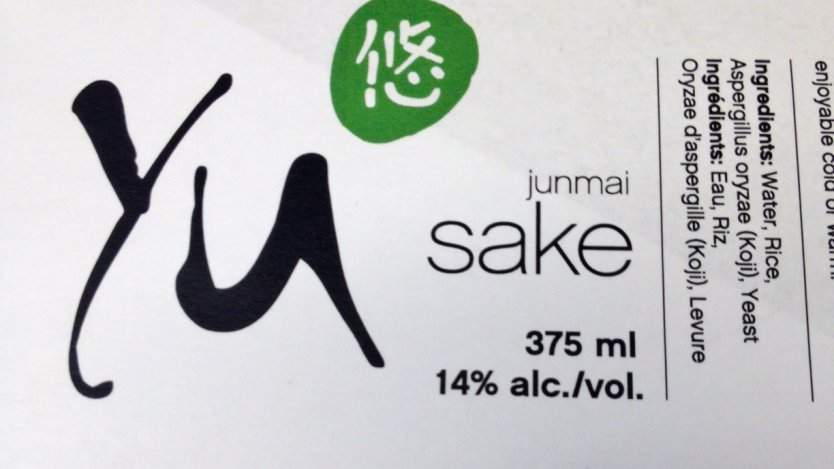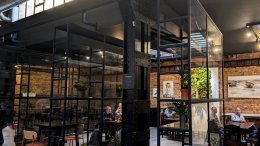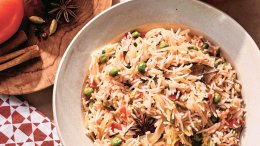At her day job, Yuki Kobayashi helps clients wade through the perils of business as a risk management consultant; but in her own foray into entrepreneurship, she’s discovered her gambling side.
Kobayashi, along with Yoshihiro Kawamura from New Zealand, purchased the former sake brewery in Richmond, B.C., known as Nipro, which featured the line, Keyope. Nipro lasted about six years, most of those mired in setup and red tape. When they were able to make sake, the products appeared on shelves around 2010, but the company couldn’t sustain itself and shuttered its doors last year.
Many factors brought on Keyope’s demise, most of them in the marketing of the product itself. Kobayashi and her partner have a new company name and product line, hoping to rejuvenate the efforts of Keyope’s master brewer, Yoshiaki Kasugai, in its new incarnation. Kasugai is a toji, or master brewer, who honed his brewing skills in Nagano before moving to Canada for Nipro.
YK3 Sake Producer has risen from the proverbial ashes of Nipro and the new look and sakes are promising. The company name was forged from the initials of Kobayashi, Kasugai and Kawamura, a fortuitous coincidence.
“Although the company’s owned by two YK’s, I really think Kasugai-san is part of our team and he’s going to contribute the most, so I thought the name would show our teamwork as well,” said Kobayashi.

She is quick to compliment her toji, and views him as the heart and soul of the operation. And she should. Kasugai is a one-person sake making show, and has fashioned his brewery to accommodate this singular approach to production. Kobayashi mentions that during the purchase negotiations with Nipro, she wanted to add Kasugai as part of the sales agreement. “He’s really the biggest asset we have,” she said.
Three 500-litre, stainless steel tanks help reduce the burden and spoilage risk of a larger, more ideal tank size of 1000 litres, but since Kasugai is brewing alone, it’s a good back-saving measure. He doesn’t use the modern jacketed tanks of ArtisanSake or Ontario Spring Water Sake Company either.
To cool the mash, which can rapidly heat up from fermentation, Kasugai snakes cold water hoses around the outside of the tanks, along with the occasional addition of ice chunks made from filtered water. This is old school sake brewing, and it’s happening in Richmond, B.C., Canada!
Since the price of shipping a sake press from Japan was deemed too exorbitant, Kasugai created his own fune [pronounced foo-nay] — a traditional box press where mashed-filled cotton bags are placed within and a heavy weighted lid anchored on top. In this way, the bags are gently pressed and clear sake liquid trickles from the side of the fune. Necessity breeds invention and certainly Kasugai’s brewery space reflects his innovation, pragmatism and handyman skills.
All proper sake breweries will have a koji room or as it’s called in Japan, kojimuro. This room is critical in producing a form of malted rice, called koji. Because rice by itself has no immediate fermentable sugar, a bit of coaxing is required. An innocuous mold called aspergillus oryzae is added to steamed rice in the kojimuro. The mold will produce enzymes that will break down the complex starches in the rice, converting them into simple sugars. About 30% of the rice that’s required for producing a batch of sake is derived from koji.
The room, which is traditionally lined in cedar, is heated to approximately 40 C so that the mold can work its way into the starch effectively. The result after two days is koji: very sweet, frosted grains of rice with a smell that resembles roasted chestnuts.
There’s no whiff of cedar in Kasugai’s kojimuro — it’s a conventional storage room just off from the main brewery area. Inside, he has installed hardwood floors and two radiator-style space heaters, which produce the humid, muggy conditions required for koji-making. It’s not the romantic visage that I have come to embrace from my visits to Japan, but Kasugai’s koji is good and it gets better with every batch.
The toji’s sheer obsession to ensure the safety of his batches goes much further. Kasugai has carefully rigged and proportioned everything in his brewery so that if power were to shut off completely, he could still continue to make sake for two days.
"I’m actually quite impressed by Kasugai-san’s creativity. In the tools and equipment he’s created…and I hope that will help to differentiate ourselves from other breweries,” she said.
The desire to educate the public on the merits of sake and Japanese culture prompted Kobayashi to take a chance with YK3. She believes that both ArtisanSake and the now-defunct Nipro started their breweries with the same intention of cultural appreciation and exchange.
“The numbers didn’t convince me to be quite honest when I was purchasing the business, but I still wanted to do it. I wanted to try and to say that I had done it. I wanted to contribute something as a Japanese person in Vancouver,” she said.
YK3’s new product line will be called YU [悠]—meaning leisurely or easy-going. They will start with three sakes: a junmai sake, a junmai nigori, which is a roughly pressed sake that has some rice sediment left in the bottle, and a junmai zenkoji sake. The latter product is an interesting anomaly because it’s hardly produced in Japan. Zenkoji uses only koji with no additions of plain sake rice, yielding a much sweeter style of sake. To quell Kasugai’s creative soul — on top of brewing, he is an accomplished painter and drawer — Kobayashi seems happy to provide him some artistic reign in his sakes. “Mostly, I am excited for Kasugai-san in that he can finally express himself,” she said.
If government label approval comes soon, Y3K’s YU sakes will be available in B.C. by the end of November. Check out its Twitter and Facebook pages for updates. Content will be up on the website shortly.
The company’s intention is to sell in BC first and possibly obtain licensing in Alberta and Ontario. With new batches of sake fermenting and the beguiling aromas of rice and yeast commingling, there’s a gentle, yet determined aliveness in the upstart brewery. Kobayashi’s daring sake gamble is about to be tested.













